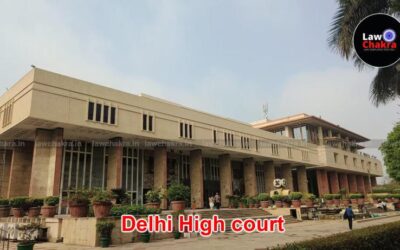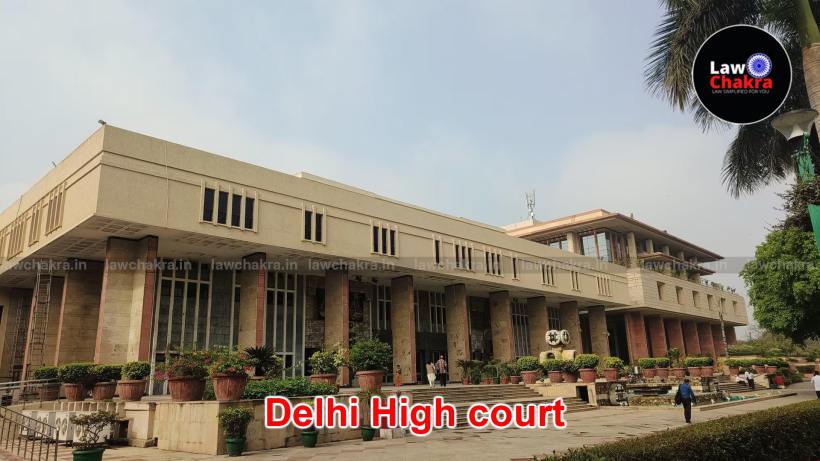Comparable Sale Deeds May Only Be Considered If They Pre-Date Section 4 Land Acquisition Act Notification: Supreme Court

The Supreme Court has reiterated that comparable Sale Deeds may only be considered if they pre-date the Notification under Section 4 of the Land Acquisition Act, 1894 (LA Act), which would consequently be truly reflective of the market value of the acquired land at the relevant time.
The Court was hearing a batch of Cross-Appeals preferred by the Haryana Industrial and Infrastructure Development Corporation (HSIIDC) and various landowners, challenging the quantum of compensation awarded by the Punjab and Haryana High Court for the land situated in the concerned villages.
The two-Judge Bench comprising Justice Surya Kant and Justice Ujjal Bhuyan observed, “As mentioned earlier, this Court has found on several occasions that comparable sale deeds may only be considered if they pre-date the Section 4 Notification, which would consequently be truly reflective of the market value of the acquired land at the relevant time. Since the Section 4 Notification in the instant case was issued on 25.04.2008, it is apparent that, with the notable exception of Ex. P-10 dated 25.07.2008, none of the sale deeds produced on record fall beyond that pivotal date.”
The Bench also reiterated that the Collector’s rates, often referred to as the statutory minimum, serve only as a baseline for compensation and should not ordinarily be relied upon as the sole basis for determining the Award.
Brief Facts
The acquisition proceedings for the subject lands commenced vide a Notification issued in 2008 by the Haryana State under Section 4 of LA Act, proposing the acquisition of the land spread across the villages. The public purpose of the acquisition was to build Chaudhary Devi Lal Industrial Model Township. This Township was planned as an integrated complex for industrial, commercial, and other public utilities in this area. Following the said notification, a declaration was issued by the State in 2009 under Section 6 and subsequently, the District Revenue Officer-cum-Land Acquisition Collector, Gurgaon (LAC) issued two different Awards under Section 11.
Both Awards uniformly determined the quantum of compensation for these villages to be INR 30,00,000 per acre, based on prevalent rates supplied by the District Collector, Gurgaon. Additionally, solatium at the rate of 30% as well as an additional amount of 12% per annum formed part of the Awards. Being dissatisfied, the landowners filed Reference Petitions and the Reference Court enhanced the compensation from INR 30,00,000 to INR 62,14,421 per acre. However, the said decision left both the State and landowners to be equally aggrieved, thus culminating in several Regular First Appeals (RFAs) before the High Court. The High Court partly allowed the landowners’ Appeals by modifying the compensation for the acquired lands. Hence, the case was before the Apex Court.
Reasoning
The Supreme Court in the above regard, noted, “… we find no justification for the disparity in compensation for lands from both villages situated in the inner belt. The High Court itself has offered no factual finding to support the conclusion that lands abutting NH-8 in Kukrola must be valued differently from those in Fazalwas. Accordingly, we hold that the differential compensation is unsustainable and must be set aside. The quantum of compensation across both villages should remain at par.”
The Court further noted that the belting method is applied in large-scale acquisitions where the land is non-homogeneous and the benefits of proximity to major infrastructure can be clearly delineated.
“It is well established that the belting method must be grounded in objective evidence of differential developmental potential. … we find that this is a fit case for the application of the belting method, and the High Court was wholly correct in its artificial division of the acquired lands into two categories for the purposes of awarding differential compensation for the same”, it also said.
Moreover, the Court emphasised that ‘market value’ itself is as nebulous a term as it is well-defined and that the market value must be understood as that price or rate which a willing buyer would pay to a willing seller at any given point in time.
“The sale exemplar relied upon is both valid and comparable, while the escalation rate applied and the development cut levied are fair and reasonable. Accordingly, the compensation awarded for these lands warrants no modification”, it added.
The Court was of the view that these errant sale exemplars do not represent the true market value of the sold lands, especially when one considers the statutory criteria of assessment of market value as envisaged under the LA Act.
“The fact that these sale deeds reflect market valuations falling below even the compensation assessed by the LAC further reinforces our determination to exclude them entirely. We hold so also for the reason that the LAC’s Award for both villages was based entirely on the Collector’s rates, i.e., INR 30 lakhs per acre for all types of land”, it observed.
The Court, therefore, upheld the compensation granted for the ‘outer belt’ i.e., lands beyond 5 acres saying that errant sale exemplars do not represent the true market value of sold lands.
“Accordingly, the compensation for lands abutting NH-8 up to a depth of 5 acres in Kukrola is enhanced to INR 1,21,00,000 per acre, bringing it at par with Fazalwas. Thus, while the claims for enhancement beyond this rate stand rejected, the appeals concerning Kukrola’s inner belt lands succeed to the extent indicated above”, it directed.
Accordingly, the Apex Court partly allowed the Appeals and modified the impugned Judgment.
Cause Title- Krishan Kumar v. State of Haryana and Others (Neutral Citation: 2025 INSC 638)
Appearance:
Senior Advocates Kiran Suri, Gagan Gupta, Manoj Swarup, H.L. Tiku, Senior AAG Alok Sangwan, AORs Vipin Gupta, Ananta Prasad Mishra, Ankit Swarup, Samar Vijay Singh, Narender Kumar Verma, Akshay Amritanshu, Vikas Verma, Vikas Kumar, Advocates R.P. Kaushik, Mukul Kaushik, S.J. Amith, Vidushi Garg, Vikrant S Verma, Neelmani Pant, Rishi Bhargava, Yash Singal, Hamad Tariq, Sumit Kumar Sharma, Rajat Sangwan, Sabarni Som, Fateh Singh, Abhishek Kumar Suman, Venkatesh Rajput, Vibhuti Sushant Gupta, Swati Mishra, Pragya Upadhyay, Drishti Saraf, Sapna Verma, Shafik Ahmed, Kavita Verma, Mayank Choudhary, Anamay Mishra, Sunny, Anju, Radhey Sham, Yashmeet Kaur, Rahul Regmi, Arun Kumar, Kedar R. Seludkar, and Hitesh Wadhwa.




